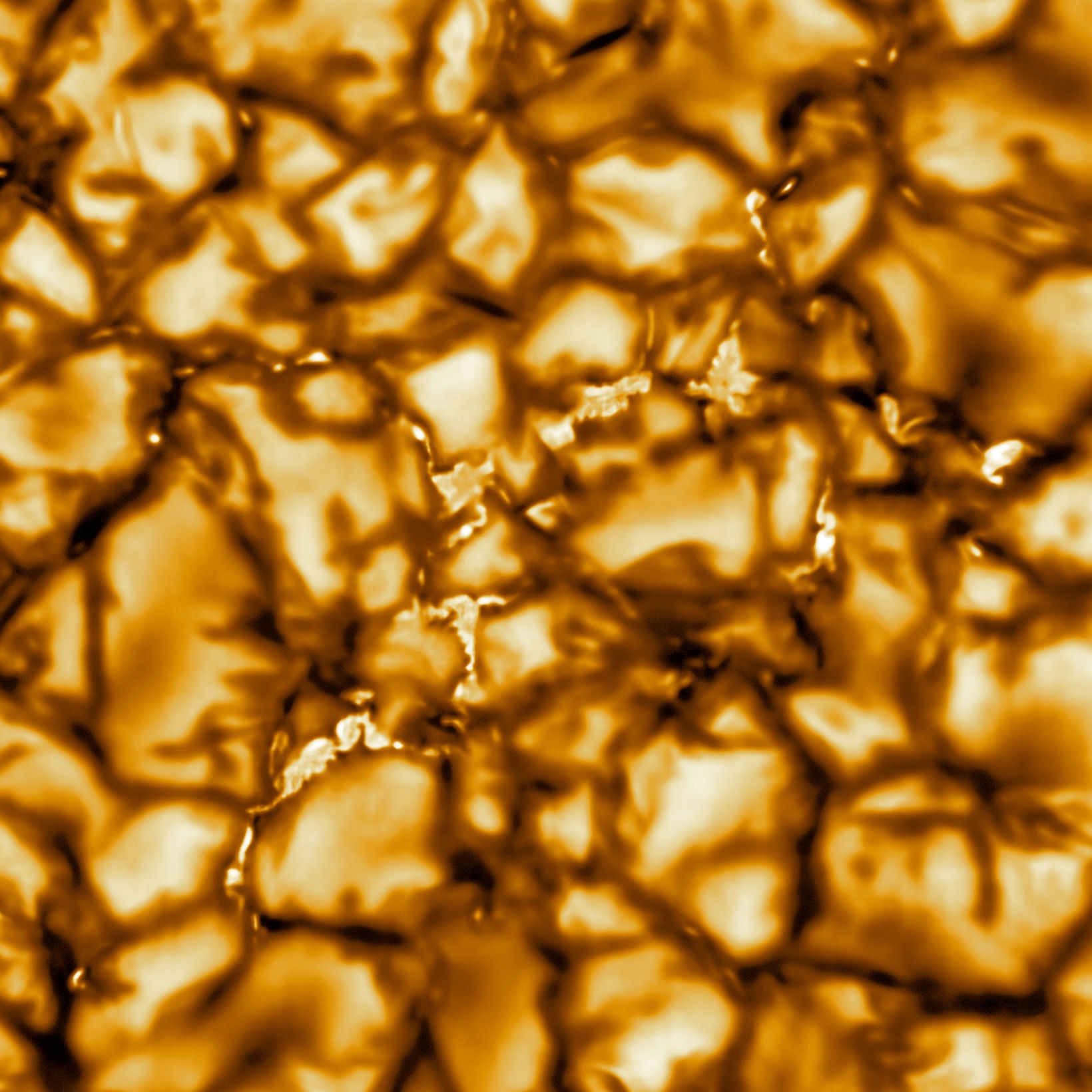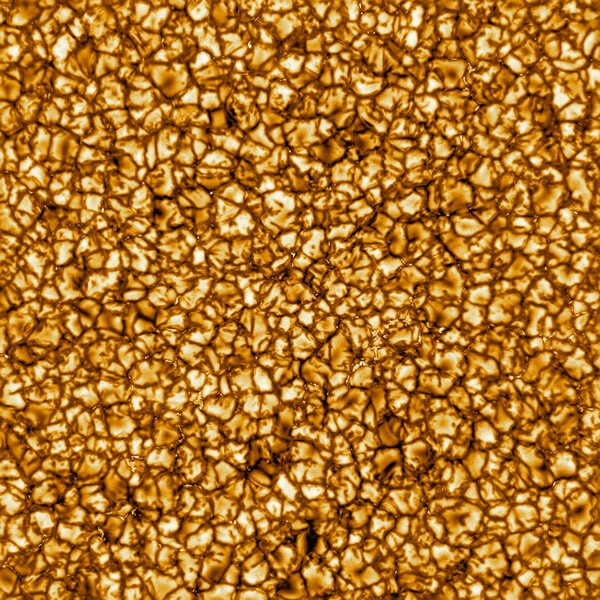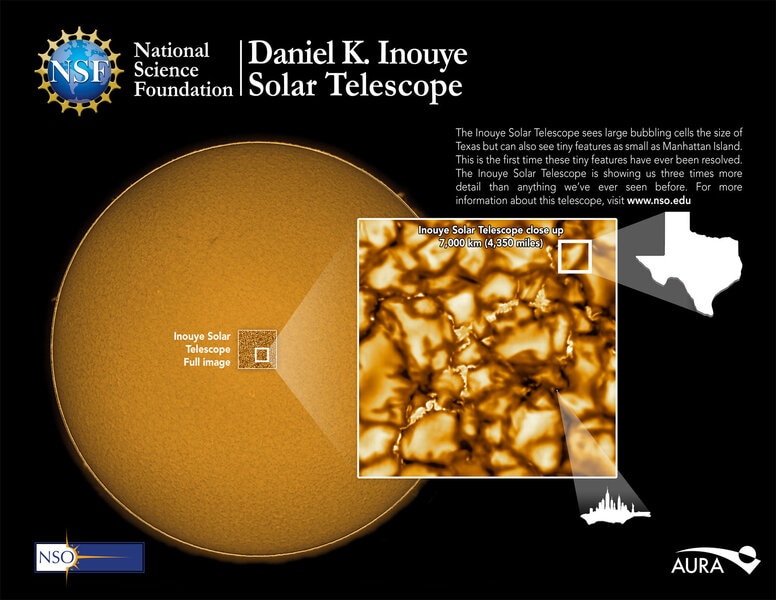Create a free profile to get unlimited access to exclusive videos, sweepstakes, and more!
The Sun, up close and *very* personal: First light for the Daniel K. Inouye Solar Telescope

The Sun is a star: A vast, 1.4-million kilometer wide roiling ball of ionized gas with a nuclear furnace at its core and a fiercely complex magnetic field that sometimes takes aim at Earth at its surface.
Getting a good look at it is in our best interest. That magnetic field sometimes gets itself tangled up, then blasts waves of high-energy electromagnetic radiation and subatomic particles so huge it defies the grasp of our puny human brains. A billion tons of hydrogen can erupt toward us at hundreds of thousands of kilometers per hour, crossing the 150 million kilometer gulf between the Sun and Earth in just days. And when it arrives our satellites and even our power grids lie at its mercy.
But seeing it clearly is harder than you think. A lot of the action happens at scales on the surface small enough to get blurred by our atmosphere when viewed through a telescope, made worse because — as you might guess — we have to observe the Sun during the day, when the air and ground beneath it are heated by sunlight, causing our atmosphere to behave even more badly.
Over the years, telescopes have gotten better, but now they've taken a giant leap: Solar astronomers have opened the Daniel K. Inouye Solar Telescope (DKIST) for business.
And business is hot.
That is the highest-resolution image of the Sun's surface ever taken. It shows the Sun in deep red light (a wavelength 0.789 microns, for those who love details) and resolves structures just 30 kilometers across. That's astounding; it's roughly the same resolution as Hubble! And it's over a region of the Sun 36,500 km across — nearly three times wider than the entire Earth.
What you're seeing are the tops of huge towers of convection inside the Sun (called granules). The Sun generates heat deep in its core, and that heat works its way out to the surface. First it goes through the radiative zone, where the plasma (ionized gas, where atoms have one or more electrons stripped off) isessentially transparent, so the heat travels literally by radiation, with each atom of plasma emitting photons to transfer the heat.
At a distance of about 500,000 km up from the Sun's center, the plasma's temperature drops enough that it becomes more opque, and the radiation can't travel freely. When that happens, the physics works out such that it's more efficient to physically move hot parcels of plasma up, a process called convection. This is the same thing you see when you heat soup on a stove, and you can watch little bits rising from the bottom of the pot. In the Sun, these parcels of hot plasma rise for the next 180,000 kilometers, forming the convective zone. When they reach the surface, the plasma becomes so thin that the light from it can escape, cooling the parcels, and they sink back down.
[Correction (30 Jan. 2020): I originally write that the convection zone takes over due to density changes in the plasma, but it's more to do with how opaque the plasma is. Thnaks to solar physicist Regner Trampedach for pointinbg this out to me!]
Here's a similar region (though at 0.705 microns) in motion:
This shows ten minutes of real time on the Sun. If you look carefully, each granule is bright in the center and darker at the edges. The bright part is where it's hot, and the darker part is where it's cooler. So the bright part is the plasma that's just reached the top, and the darker material is sinking back down into the Sun. These are a little like geysers, bursting up in the middle then falling down around the sides.
Want more detail? DKIST has detail:
That's a smaller region, where you can see the granules more clearly. For scale, the bigger granules there are over 2,000 km across — comfortably bigger than Texas!
Again, here's a similar region in motion:
The material you can see in between the granules is plasma being manipulated by the Sun's fierce magnetism. A moving plasma generates a magnetic field, and there is a lot of plasma boiling around there. Each granule has a magnetic field associated with it, and these interact with neighboring granule, creating an incredibly complex overall field.
Sometimes, those field lines get tangled up, and snap… and when they do they release the energy stored inside them. They energies involved are huge; a solar flare can be produced when those lines snap, and the biggest of these can blast out as much as 10% of the Sun's total output!
Mind you, the total energy the Sun releases is equivalent to detonating 100 billion one-megaton nuclear bombs. Every second.
So yeah, flares are powerful. And coronal mass ejections, an even larger explosion, can blast a billion tons of hydrogen into space at high speed. That material carries magnetic field with it, and if it hits the Earth can play havoc with our satellites and power grid. In 1989 a decent-sized one caused widespread power blackouts in Quebec, and in 2012 one missed us that was so powerful that had it hit, well, we'd have lost power across the US, a large fraction of satellites would have been fried, and things would've been bad. Very, very bad.
That's a big reason we study the Sun, and why DKIST was built. It's a behemoth: It sports a four-meter mirror, sitting on top of Haleakala in Maui, Hawaii, making it the largest solar observatory on the planet. It has several detectors on it, specialized for the kinds of science they do, with a preference for mapping the strength and shape of the magnetic field at high-resolution and at different wavelengths.
I'm most excited about the science that will come from this with simultaneous observations using SDO, SOHO, and other space-based missions that can see in wavelengths of light (ultraviolet and X-ray) that can't be done from the ground. That's where the real power of this comes through, when different wavelengths across the spectrum are combined to really probe the physics underlying the Sun's behavior.
DKIST will play a key role in our scientific understanding of the Sun. Despite being the closest star, there's still a lot we don't know about it. Our existence as a technological civilization depends on our knowledge of it. Given that it's the central source of light and warmth in the solar system, our existence as denizens of this planet depends on it as well.





























